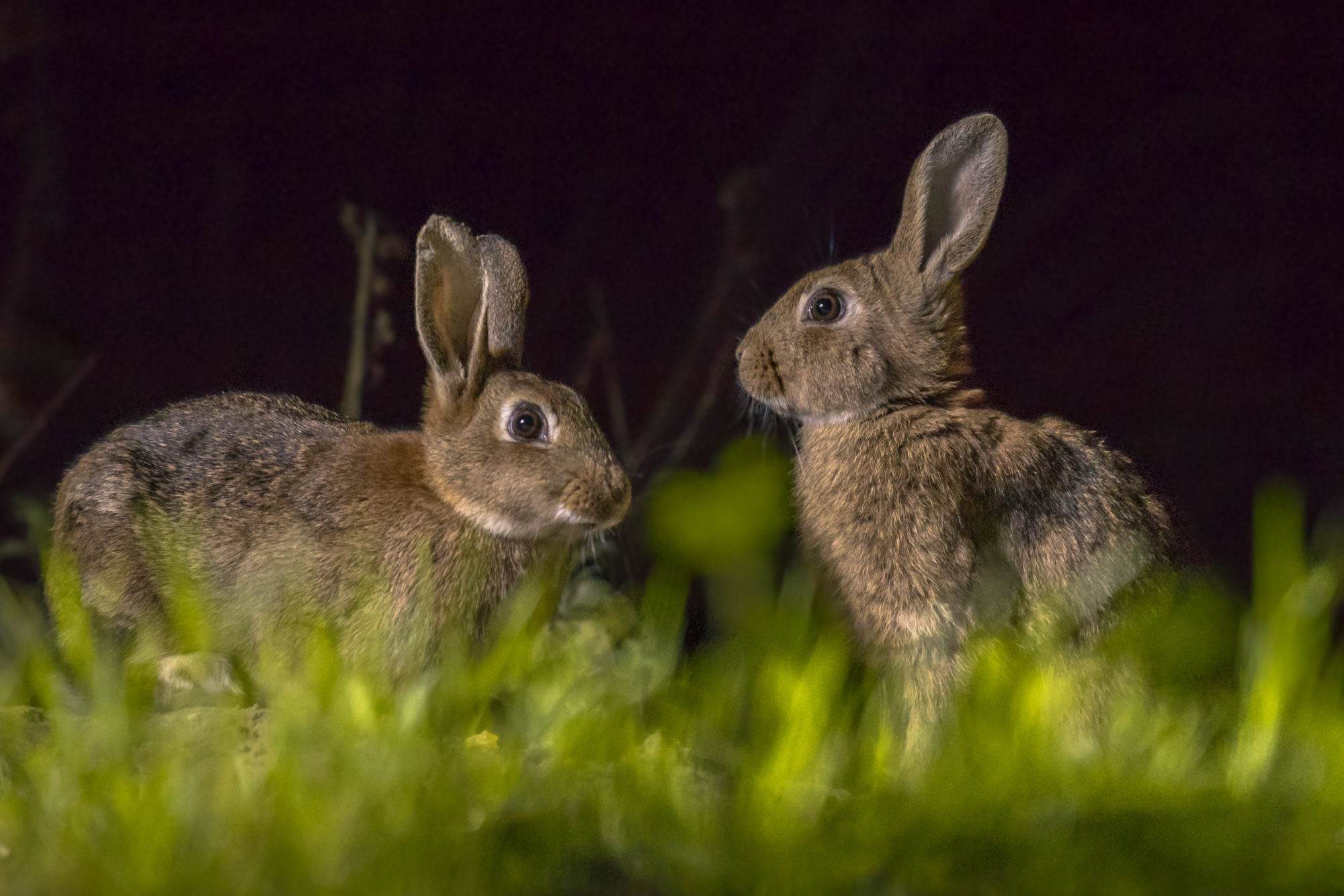Rabbits were introduced to New Zealand in the 19th century for food and sport. They soon became a pest. Reaching plague proportions in some areas, they cost the country millions of dollars through lost production on farmland as well as through attempts to control them. Rabbit numbers have escalated dramatically. Many areas that have not seen rabbits for decades, both rural and urban, are now seeing them at alarming levels.
Rabbits have a significant effect on the ecosystem, causing large areas of land to become eroded and native vegetation to change. They are a good food source for predators, boosting these populations and subsequently putting huge pressure on native birds and wildlife. Most wild rabbits live for about 18 months. They live in colonies or warrens with a social hierarchy. Males often make mounds or ‘buck heaps’ to mark their territory. Rabbits are also capable of living above ground in either rocky terrain or within dense scrub. As rabbits are nocturnal, they spend most of their day underground in the safety of their burrow before venturing out at twilight to feed for most of the night. Seeing rabbits out and about during the day indicates a high population. The home range of the rabbit is generally 2-3 hectares but they will stray further in search of food.
Controlling rabbits can be difficult, especially in built-up areas. The option of shooting may not be possible or all that effective if numbers are high. To ensure shooting is more effective, a good baiting programme can help keep numbers to a minimum. Pindone is a first-generation anticoagulant poison in a cereal-based pellet that is designed for the control of rabbits in rural and urban areas. Pindone is a slow-acting anticoagulant that needs to be consumed over several days to be effective. The toxin reduces the clotting power of the blood, causing internal haemorrhage. Death occurs 4-11 days after bait consumption. It is important to have sufficient bait for 2-3 days feeding by all rabbits in the area. Feeding rabbits will recruit rabbits outside their territory to the bait station, which means the numbers feeding can persist and increase over a period. While rabbits may be active in the treated area for 4-5 days after taking the poison, very few rabbit carcasses will be found. Most rabbits will go back to their burrows to die. Bait should always be applied using bait stations.
In cases where there is concern about bait being accessible during the daytime, use a bait station such as a No Pests Multi-feeder that can be closed off to stop non-target species accessing the bait. A sheet of iron or plywood weighted on top would provide an enticing and comfortable feeding area and give extra weather protection while also eliminating stock access. A new bait station introduced into the rabbits’ territory should be left for 7-10 days before filling with bait pellets as rabbits are considered reasonably neophobic. Turning over a spit of dirt in front of the bait station can entice rabbits to investigate. Spring grass growth competes with the bait and may discourage uptake so the timing of application may need adjustment.
For large areas, consider aerial or ground applications using a registered.applicator. Withholding period for stock is 28 days.
Another option for controlling rabbits is to treat both the warrens and burrows with Magtoxin. This is a pellet that, once placed in the burrow, becomes a gas and fumigates the rabbits beneath the ground.
Article supplied by Key Industries – published in Farmlander Magazine Feb 2022


